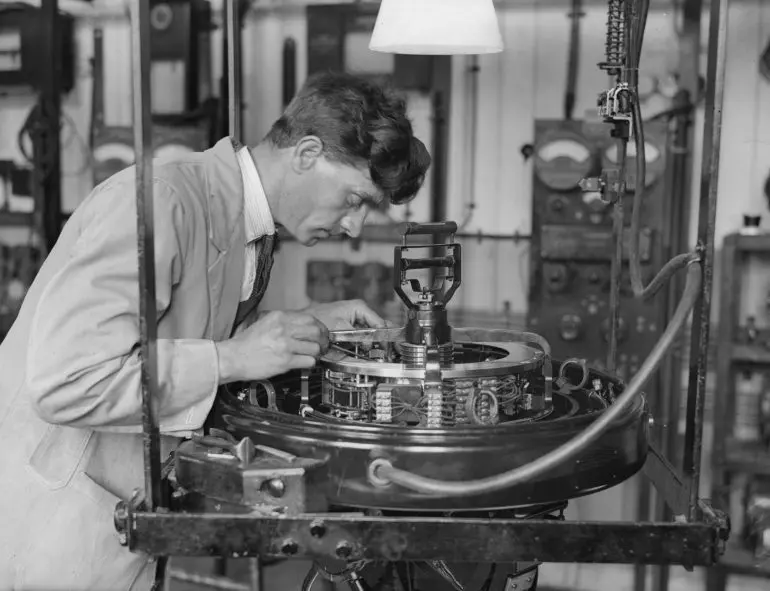Whether you’re out on a nice afternoon hike, building a skyscraper or sailing a ship around the world, a compass is the one piece of equipment you can’t do without.
Put simply, a compass is an instrument that aligns with the Earth’s natural magnetic field and determines direction. Wherever you are in the world, a compass will always tell you which way is north. Long before the billion-dollar navigational aids like sat-nav and GPS, a small plastic compass was good enough to get you home if you were lost.
Here, we’ll find out how compasses are made.
North, South, East or West - A Short History of the Compass
Before the invention of the compass, ancient seafarers could plot direction using the position of the sun and stars. In the northern hemisphere, navigators used the North Star – Polaris – to know which direction was north. Of course stars are only visible at night, and if it was cloudy there was no way of knowing where they were or what direction they were facing.
Around the second century BC, the Chinese Han dynasty first explored the concept of how compasses are made. They discovered that naturally occurring magnetised iron ore (now known as magnetite or lodestones) would always orient itself on a north-south axis using the Earth’s magnetic field. They made compasses using such materials. However, for hundreds of years they were used primarily for divination and for feng shui, rather than direction and navigation. Yet by the eleventh century, the Chinese were also using compasses for nautical navigation, and by the 1300s most of western Europe, the Middle East and Scandinavia were also using compasses for exploration and for the study of astronomy. The age of discovery was well and truly upon us.
Over the centuries, technological advancements improved upon the design and accuracy of compasses. In the more modern age, it was in 1936 that Finnish inventor Tuomas Vohlonen patented the liquid-filled compass we use today. Here’s all you need to know about how a magnetic compass is made.
A very simple device for a very important job

Compass and map (Photo: Cristian Baitg via Getty Images)
Compasses perform a vital job, but they are deceptively simple devices to make. You can even make one at home with a paperclip, a magnet, a bowl of water and a piece of cork. In this article, we’ll explore how compasses are made with a focus on the standard-use manufactured compass that you’d purchase in a shop or online.
The Needle

Close-Up Of Navigational Compass (Photo: Sawitree Pamee via Getty Images)
The most important part of a compass is the needle. It works by aligning itself with the natural magnetic field of the Earth. This is where the answer to the question how a magnetic compass is made starts.
First, a mixture of iron ore, coke (a porous rock consisting of carbon and assorted impurities), and limestone is heated by very hot pressurised air in a blast furnace. After a series of chemical reactions, the resulting material is called pig iron and is made up of around 90% iron, up to 5% carbon and other impurities which are then removed by blasting oxygen into it at very high pressure. The net result is molten steel which is left to cool and harden.
Once the steel has set, it’s heated again to a temperature of around 1,200°C until it can be rolled into very thin sheets. The compass needles are then stamped out of this sheet of thin steel.
Next, they are placed on a turntable which sprays the north-pointing end red and the south-pointing end white. At the same time the needle is exposed to a very strong magnetic field through a device called an electronic magnetiser so the red end will always point north.
The Housing

Compass Directions (Photo: Comstock via Getty Images)
The plastic housing is made by injection-moulding a liquid transparent thermoplastic called polymethyl methacrylate – known to us as acrylic, perspex or plexiglass – to form the housing for the compass. The top, bottom and sides are snapped together (but not permanently closed), often being printed with the manufacturer’s logo or model name. The bottom will show between four and 32 compass points depending on the model. This completes the main elements involved in how compasses are manufactured, though there remain a few more stages before the final product is completed and shipped.
The Assembly

1933: A compass engineer adjusts the workings of a large compass being manufactured (Photo: Fox Photos via Getty Images)
When moving through the process of how a magnetic compass is made, the assembly must be extremely precise.
The needle is usually set onto a steel pivot, though in more expensive compasses the pivot will be made of a lighter and more durable metal like an osmium-iridium alloy and topped with a jewel such as a sapphire or ruby. It will also be finely balanced using very accurate computer technology.
The housing is then filled with liquid (for example a mix of water and ethyl alcohol) to dampen the rotation and allow the needle to come to rest more quickly when the compass is in use. Once the liquid is inside, the edges will be sonic-welded rather than heat-welded, so as not to disturb the magnetised needle.
As with all manufactured products, the compasses will be quality controlled. Once the tests have been successfully passed, they will be packed up and shipped out.
So this answers the question ‘how are compasses made’. Next time you’re lost in the woods and need to use one, you’ll know how they’re put together and the history of this often crucial device.











